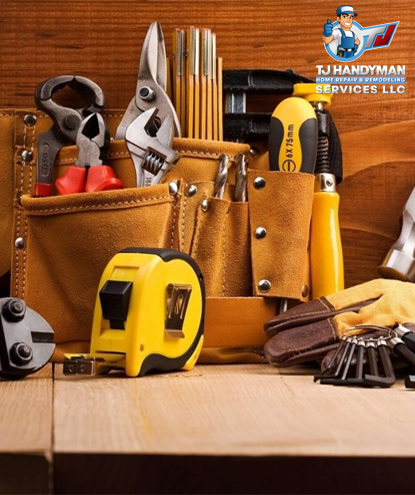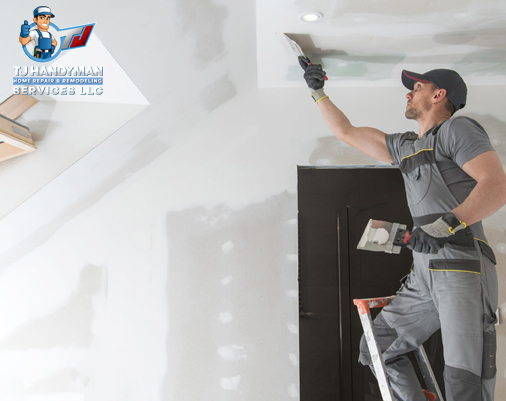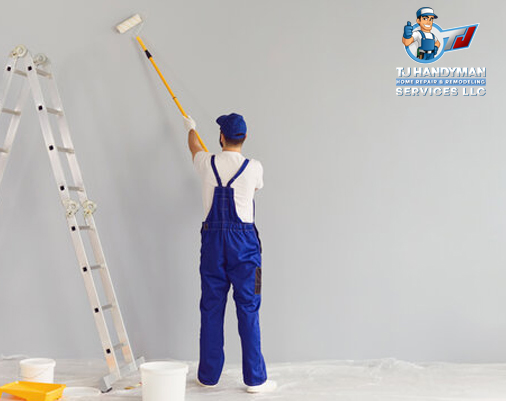As a homeowner, you’ve probably encountered a variety of odd jobs around the house that need attention. From minor repairs to creative DIY projects, tackling these tasks can be satisfying and cost-effective. Here, we’ll share some invaluable handyman hacks to help you handle these odd jobs like a pro. Whether you’re an experienced DIY fixer or just getting started, this blog will give you the tools to tackle common household problems like a pro. So, let’s get started!
Essential Tools for Every Homeowner
Before diving into repairs, it’s crucial to have the right tools on hand. Here are some essential tools that should be part of every homeowner’s toolkit:
- Claw hammer
- Screwdriver set (flathead and Phillips)
- Adjustable wrench
- Utility knife
- Tape measure
- Level
- Pliers (regular and needle-nose)
- Cordless drill with a variety of drill bits
- Safety goggles and work gloves

Safety First: Precautions and Protocols
Before starting any DIY project, safety should always be a priority. Handling sharp tools, electrical equipment and working at heights require extra precautions to prevent accidents and injuries. Always wear appropriate safety gear, including safety goggles, work gloves, and sturdy footwear, when dealing with sharp tools. Remember to turn off the power supply and use insulated tools to avoid shocks when working with electrical equipment. For tasks that involve working at heights, always use a sturdy and stable ladder and have someone nearby to assist if needed.
Hacks for Basic Home Repairs
Even the most daunting household issues can be resolved effortlessly. Whether you’re looking to save money on professional services or become more self-sufficient in maintaining your home, these hacks will provide you with the necessary skills and knowledge to handle basic repairs easily.
Squeaky Doors
Squeaky doors can be silenced by tightening all loose screws on the hinges and applying lubricant like WD-40 to the hinge pins. If the squeaking persists, removing the hinge pins and applying a thin layer of petroleum jelly can do the trick. As for creaky floors, sprinkle talcum powder or powdered graphite into the cracks between the floorboards and walk on them to allow the powder to reduce friction and silence the creaks.
Holes And Cracks In Walls
Another common issue in households is small holes and cracks in walls. To patch them up, clean the area around the hole or crack and remove any loose debris. Then, fill the hole or crack with spackling paste using a putty knife and allow it to dry completely. Once dry, sand it until smooth and paint over the patched area to match the surrounding wall.
Efficient Plumbing Hacks
Dealing with plumbing issues can be daunting, but you can confidently handle them with the right hacks. A plunger is your best friend when it comes to unclogging drains and toilets. By creating suction, a plunger can dislodge most clogs in drains and toilets, saving you from the hassle and expense of calling a plumber.
Running Toilets And Dripping Faucets
A few simple fixes can make all the difference for common plumbing issues like running toilets and dripping faucets. Running toilets can waste a significant amount of water, but often the problem can be resolved by adjusting the float or chain to stop water from continuously running. Replacing the flapper valve with a new one can solve the issue if the flapper valve is damaged. As for the dripping faucet, you have a damaged flapper valve; replace it.
Installing a New Showerhead or Faucet
If you have a dripping faucet, turn off your water supply and replace the worn-out washer or cartridge within the faucet. A new showerhead or faucet will make a big difference in your bathroom. Turn off your water supply to your shower or sink. Remove your old showerhead or old faucet with a wrench or plier. Clean the threads on your shower pipe or shower arm. Apply the plumber’s tape to the threads.
Electrical Fixes Made Easy
Electrical issues can be intimidating, but with some basic knowledge, you can handle minor fixes on your own. When the power goes out in specific areas, it might be due to a blown fuse or tripped circuit breaker. To identify and resolve this issue, locate the electrical panel in your house and check for any tripped circuit breakers or blown fuses. Resetting the circuit breakers or replacing blown fuses can restore power to the affected areas.
Installing Fixtures
Installing light fixtures, switches, and outlets may seem complicated, but it’s a manageable task with the right precautions. Always turn off the power to your working area before attempting any electrical installation. Follow the manufacturer’s instructions to install the new fixture, switch, or outlet, and double-check all connections before turning the power back on.
Flickering Lights And Dead Outlets
Some common electrical problems you might encounter include flickering lights and dead outlets. To address flickering lights, tighten loose lightbulbs and check the socket contacts. If the issue persists, it might be a problem with the electrical circuit or wiring and require professional attention. Check the circuit breaker for dead outlets to ensure the outlet isn’t tripped. If the circuit breaker is fine, check for loose wires at the outlet and tighten them as necessary.
Mastering Drywall Repairs
Drywall repairs are common, especially in households with active children or pets. Fortunately, patching small and medium-sized holes in drywall is a straightforward process. Clean the area around the hole and remove any loose debris. Then, apply a self-adhesive mesh patch over the hole and cover it with a joint compound using a putty knife. Once the compound is dry, sand the area smoothly, and you’ll have a seamless surface ready for painting.
Remember to apply a thin coat of joint compound and feather it out from the patch to achieve a professional finish on your drywall repairs. Sand lightly between coats to ensure a smooth finish. For larger sections of damaged drywall, a more extensive repair is necessary. Cut out the damaged section of drywall with a utility knife, and measure and cut a replacement piece to fit the opening. Secure the new drywall piece with screws and apply joint compound and tape over the seams. Sand and finish the repaired area for a professional look that blends seamlessly with the rest of the wall.


Painting Tricks for a Flawless Finish
A fresh coat of paint can breathe new life into your home, but achieving a flawless finish requires proper techniques. Before painting, prepare the surfaces properly by cleaning them to remove dirt, grease, and old paint. Fill any cracks or holes with spackling paste and sand them smooth. Applying a coat of primer will promote paint adhesion and provide a more durable finish.
Choosing the right paint and color schemes is crucial for creating the desired ambiance in each room. Opt for a high-quality paint that suits the specific surface you’ll be painting. To ensure you like the color, try paint samples on the walls to see what they look like under different light conditions.
When it’s time to apply paint, use quality brushes and rollers. Paint in thin and even coats, allowing each coat to dry before applying the next. Using painter’s tape can help achieve clean lines and edges, ensuring a professional finish to your paint job.
Outdoor Handyman Hacks
Maintaining your outdoors has its set of unique challenges. However, these projects can be rewarding with the right techniques and skillset.
Maintaining the Exterior of the House
Maintaining the exterior of your house not only enhances curb appeal but also protects your investment. Regularly inspect the siding for damage and make necessary repairs to prevent further deterioration. Cleaning the gutters and downspouts regularly is essential to prevent clogging, which can lead to water damage and other issues.
Handling Common Outdoor Repairs
Handling common outdoor repairs can extend the life of your outdoor structures and enhance your enjoyment of your outdoor space. Fixing fences is a relatively simple task that involves replacing broken or rotting fence posts and boards. Staining or painting the fence enhances its appearance and protects it from the elements.
Deck Maintenance
Regular maintenance is essential for longevity for those lucky enough to have a deck. Inspect the deck for loose boards and secure them with screws. Cleaning and resealing the deck annually will protect it from moisture and UV damage, ensuring many years of enjoyment.
Lawn Care and Landscaping
Lastly, a well-maintained lawn and landscaping can add beauty and value to your property. Mowing the lawn regularly will keep it looking neat and tidy. Planting native flowers and shrubs requiring less maintenance can reduce your outdoor workload while adding charm to your landscape.
To Wrap Up!
Congratulations! You’re now equipped with a toolkit of handyman hacks and tips to tackle odd jobs around your house. By mastering these skills, you’ll save time and money while enjoying the satisfaction of a job well done. Remember to prioritize safety, and don’t hesitate to call TJ Handyman Home Repair & Remodeling Services if you need professional handyman services for more significant or complex projects. Happy handyman-ing!



